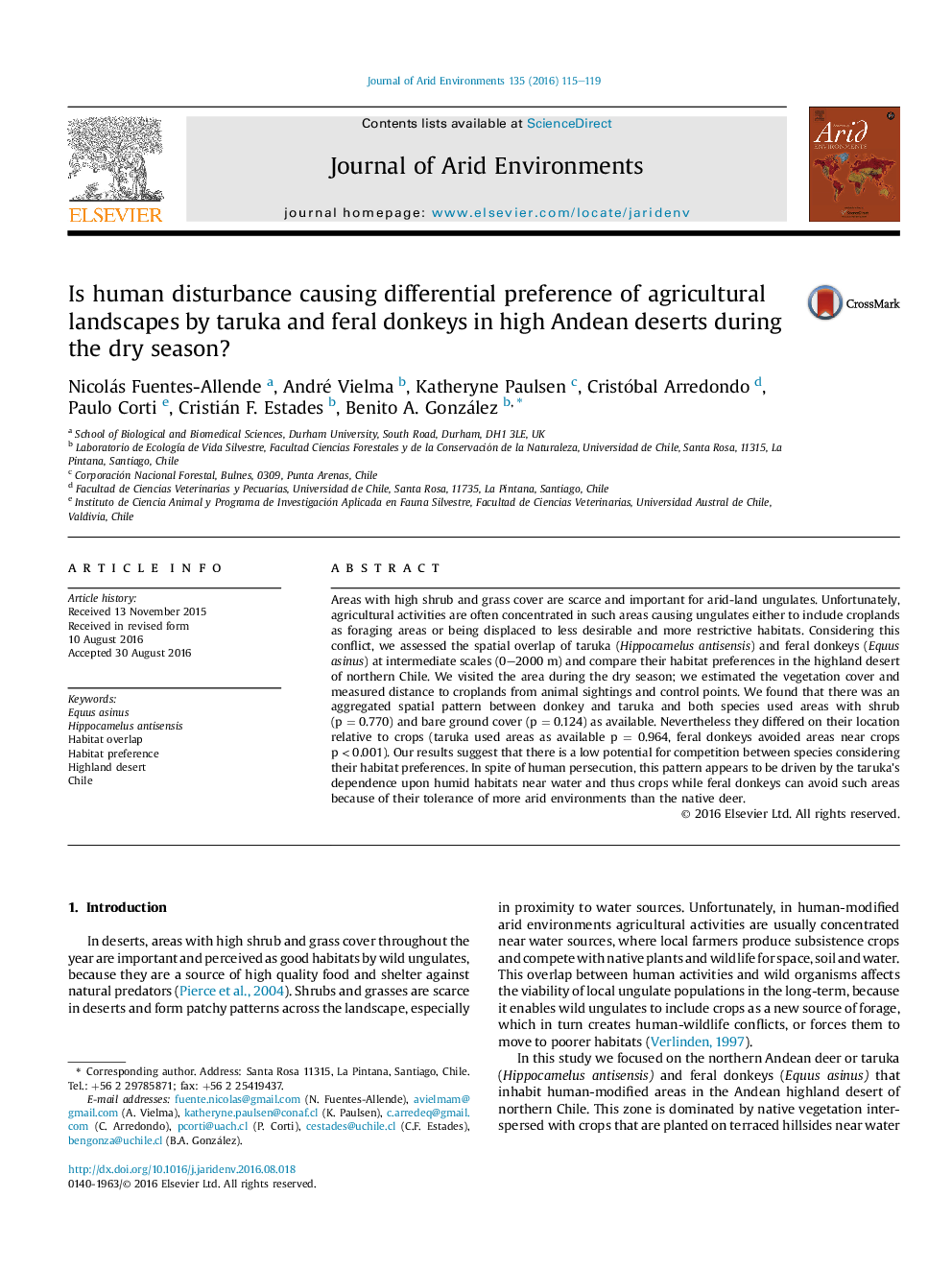| Article ID | Journal | Published Year | Pages | File Type |
|---|---|---|---|---|
| 4392678 | Journal of Arid Environments | 2016 | 5 Pages |
•Taruka and donkeys are spatially aggregated using available shrub and bare ground.•There is low potential for interspecific competition at local scale.•Taruka use areas near crops depending on availability whereas donkeys avoid them.•Deer might not avoid croplands as it depends on humid areas near crops.
Areas with high shrub and grass cover are scarce and important for arid-land ungulates. Unfortunately, agricultural activities are often concentrated in such areas causing ungulates either to include croplands as foraging areas or being displaced to less desirable and more restrictive habitats. Considering this conflict, we assessed the spatial overlap of taruka (Hippocamelus antisensis) and feral donkeys (Equus asinus) at intermediate scales (0–2000 m) and compare their habitat preferences in the highland desert of northern Chile. We visited the area during the dry season; we estimated the vegetation cover and measured distance to croplands from animal sightings and control points. We found that there was an aggregated spatial pattern between donkey and taruka and both species used areas with shrub (p = 0.770) and bare ground cover (p = 0.124) as available. Nevertheless they differed on their location relative to crops (taruka used areas as available p = 0.964, feral donkeys avoided areas near crops p < 0.001). Our results suggest that there is a low potential for competition between species considering their habitat preferences. In spite of human persecution, this pattern appears to be driven by the taruka's dependence upon humid habitats near water and thus crops while feral donkeys can avoid such areas because of their tolerance of more arid environments than the native deer.
